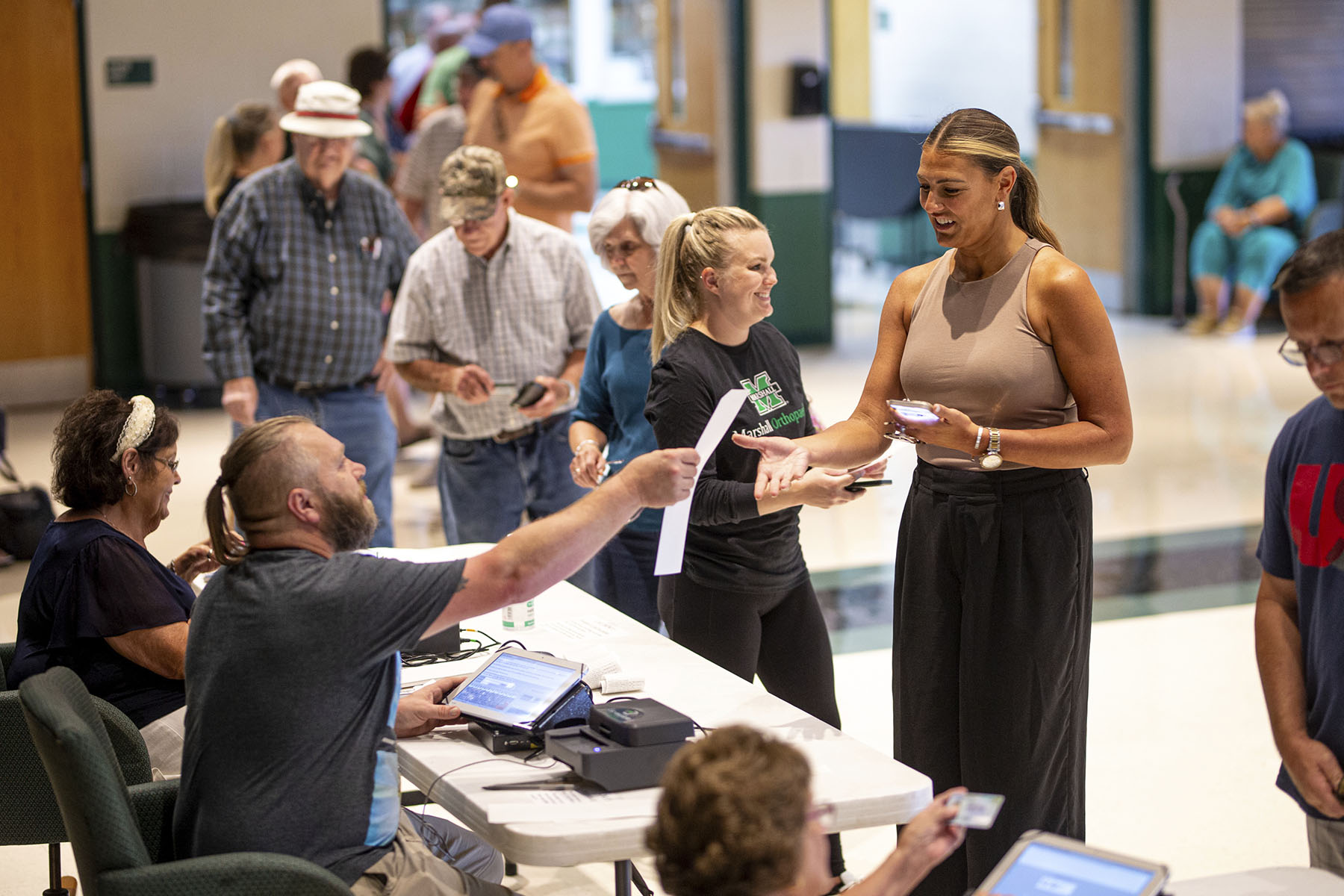Your trusted source for contextualizing politics and abortion news in Ohio and beyond. Sign up for our daily newsletter.
Ohio voters rejected an effort that would have made it harder to pass citizen-led ballot initiatives, in a rebuke of Republican efforts to block an expansion of abortion rights that’s on the ballot in November.
Issue 1, which would have raised the threshold to pass citizen-led ballot measures from a simple majority to a 60 percent threshold failed, Decision Desk HQ projected. With about 97 percent of the vote in, “no” led by about a 13-point margin.
The vote was a defeat for anti-abortion advocates and GOP lawmakers, who scheduled the Tuesday special election in part to thwart the passage of a constitutional amendment on the November ballot that would enshrine abortion rights into the state constitution.
Ohio Republicans had canceled August special elections in January, citing high costs and low turnout. But in May, as organizers were gathering signatures to put the abortion amendment on the ballot, lawmakers moved to put Issue 1 on the ballot and scheduled a special election for Tuesday. The special election has seen notably high early voter turnout, with over half a million Ohioans casting ballots.
-
Everything You Need To Know:
-
Everything You Need To Know: The 19th Explains: What to know about Ohio Issue 1
Liz Walters, chair of the Ohio Democratic Party, criticized how GOP leaders put the measure on the ballot as “remarkably cynical.”
“They put this issue on the August ballot kind of taking a bet that most Ohioans weren’t going to pay attention and weren’t going to see this as the naked power grab that it is,” Walters said. “But I think that’s backfiring on them.”
Issue 1 would have had far-reaching consequences for Ohio’s over 100-year-old citizen-led initiative process. In addition to raising the threshold to pass citizen-led initiatives, Issue 1 would have imposed new barriers to getting them on the ballot in the first place. The measure would have required initiative campaigns to get signatures from all 88 Ohio counties instead of 44 and taken away the window for voters to contest signatures thrown out by the secretary of state.
Republican leaders behind the amendment include Secretary of State Frank LaRose, a candidate for U.S. Senate in 2024 who has made the amendment a central issue in his campaign. LaRose told fellow Republicans in May that Issue 1 is “100 percent” aimed at blocking the passage of what he called a “radical, pro-abortion amendment.”
The amendment on Ohio’s ballot in November would establish an affirmative right to abortion and other reproductive health care, including pregnancy care, miscarriage care and contraception. It’s modeled after a constitutional amendment Michigan voters passed with 57 percent of the vote in the 2022 midterms. While recent polls have shown a majority of voters support the Ohio abortion amendment, passing an amendment with 60 percent of the vote would be a much more difficult task for organizers than a simple majority.
Democratic Rep. Shontel Brown, who represents a Cleveland area district, said Tuesday’s vote left her “cautiously optimistic” about the amendment in November.
“The good news is this was not solely a one-sided, one-party outcome as relates to Issue 1. This was both Republicans and Democrats alike who showed up to vote Issue 1 down,” Brown said. “As it relates to November, that is going to require us to do some digging, see where our strengths are.”
Supporters of Issue 1 also argued it would limit outside influence and special-interest spending in citizen-led initiative campaigns. The battle over Issue 1 has drawn over $35 million in spending, much coming from out-of-state groups, the Ohio Capital Journal reported. Most of the funding for Protect Our Constitution, a pro-Issue 1 group, has come from a single out-of-state GOP donor, Illinois shipping magnate Richard Uihlein.
Anti-abortion groups also argue the reproductive rights amendment would infringe on parental rights by possibly making it easier for minors to obtain abortions and contraception. Around the country, Republican lawmakers and anti-abortion activists are seeking to thwart pro-abortion rights measures from getting on the ballot and making it more difficult to pass citizen-led constitutional amendments. Groups opposed to abortion hoped the passage of Issue 1 would put groups supportive of abortion rights on notice.
“The ACLU is one of the groups that is coming into Ohio with unlimited funds and they are trying to buy an extreme anti-parent abortion amendment this November,” said Amy Natoce, press secretary for Protect Women Ohio, which supported Issue 1. “This will send a strong message to them that this is not how we do things in Ohio.”
Susan B. Anthony Pro-Life America, an anti-abortion group, laid the blame for Issue 1’s failure on “the silence of the establishment and the business community in Ohio” in a Tuesday night statement.
Abortion in Ohio is currently legal up to 22 weeks, while a six-week ban passed by Republican lawmakers remains on hold in the courts. Ohio could prove especially critical to abortion access in the Midwest. Lawmakers in nearby states like Indiana and Iowa have passed new abortion bans that are currently blocked by courts but could eventually go into effect.
“Ohio is now the center, the battleground state for abortion rights in this country, and we take that responsibility very seriously,” Walters said. “And we know that there’s a lot at stake here, most importantly for Ohio women, but also for women all over this country.”







